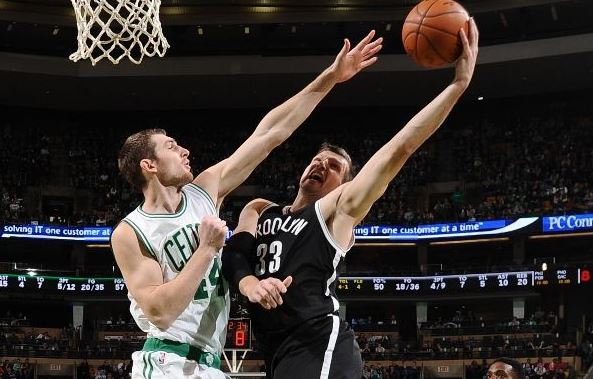When Brad Stevens announced that Brandon Bass would be starting over Tyler Zeller before the Blazers game, I was surprised. Sure, the starting five of Turner, Bradley, Crowder, Sullinger and Zeller had struggled, but would replacing Zeller with Bass fix that? Does it make sense to bench a 25-year-old center who has been steadily improving for a 29-year-old power forward who may not be on the team past this season?
As it turns out, it made perfect sense. The Celtics have won three of their last four and have a chance to finish their west coast road trip with an improbable 4-2 record if they can beat Minnesota tonight. They sit just two games out of the playoffs and have the easiest remaining schedule of the teams they are competing with for the final spot.
Why Brad Stevens Made the Switch
First off, the Bass-Zeller lineup switch does not deserve all or even most of the credit for the Celtics recent push, but it is difficult to ignore given that the Celtics have won three of four since. When the switch was made, Stevens said it was because the team needed “to be more mobile and a little bit more versatile defensively.”
Defense could very well have been his primary reason for making the switch. The Cs were heading into a game against the Blazers where they probably expected Portland to go small for a large portion of the game, and, as we have seen in the past, Bass matches up better against small lineups at the four than Sullinger does. He is quicker, making it easier for him to both rotate and close out to shooters while containing the ball. However, the Blazers went big with Thomas Robinson at the four and stayed that way for the majority of the game. In the Celtics other wins on the trip against the Nuggets and Jazz, both teams played with traditional two big lineups for nearly the whole game. Stevens sticking with the smaller starting group even against primarily bigger lineups leads me to believe there is something more at play here.
Stevens could have just wanted to change up the lineup in some way due to their struggles, and switching out Zeller made the most sense. But Stevens is not the kind of guy to make a change just for the sake of change. Regardless of why it was made, Stevens’ decision has worked out, particularly for one player.
Tyler Zeller Is Better Coming Off the Bench
At this point in the season, it’s safe to say that Tyler Zeller is better coming off the bench. In 26 games as a starter, his team’s offensive rating while he’s on the floor is a dismal 95.8. When he comes off the bench, however, his offensive rating sees a huge jump to 106.1. That disparity is just too large to be ignored, and could have easily played a role in Stevens decision to move him back to a bench role. Remember, Zeller was coming off a game against the Clippers in which he was dominated by DeAndre Jordan down low. With five more Western conference games to go on the road trip against bigger and more physical centers, Stevens may have thought that Bass, a proven NBA veteran, was a better matchup.

Another reason Zeller has been better with the second unit is because he does not play well with Evan Turner. The pair is an average of -12.4 points per 100 possessions against their opponent while sharing the floor. Since Zeller gets a lot of his offense off the pick and roll, it is important to pay attention to which ball handler he is paired with. He clearly excelled with Rajon Rondo, a guy who was great at finding Zeller as he rolled to the hoop. Turner, for the most part, struggles to hit the roll man off of the ball screen, making him a bad match for Zeller. On the second unit, Zeller is able to create a little more of his own offense in the post, and while Marcus Smart is still inexperienced, he has shown recently that he’s capable of finding Zeller rolling to the rim.
Zeller also does not play particularly well alongside Jared Sullinger. Jay King covered the Sullinger side of this problem about a month ago, but the pairing may have hurt Zeller offensively as well. Overall, the combination is about -4 points against their opponents per 100 possessions. While Sully can shoot the three, both he and Zeller are more effective around the rim, meaning the two take up much of the same space while on the floor together.
Zeller is more of a focal point with the bench unit, averaging 11.8 points and 5.5 rebounds in his past four games. Both numbers are better than his season averages, even though he is playing roughly the same amount of minutes. In the Celtics last game against Utah, it was the second unit that was responsible for making the big second quarter push that helped the Cs pick up the W, and that group has played well even while losing Kelly Olynyk. For the Celtics, the difference between the starters and the bench is not significant, and if Bass can hold down the fort while Zeller excels in his bench role, the lineup switch can continue to be effective. The strides Zeller has made since the Celtics acquired him have been very encouraging, and he may be able to be a starting NBA center in a year or two if he continues to get stronger and improve his game. Putting him in the best position to succeed is key to continuing that development.
Add The Sports Daily to your Google News Feed!
